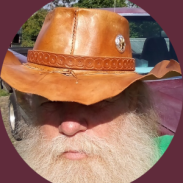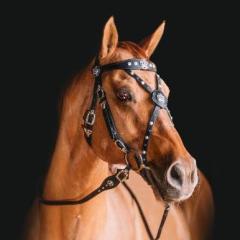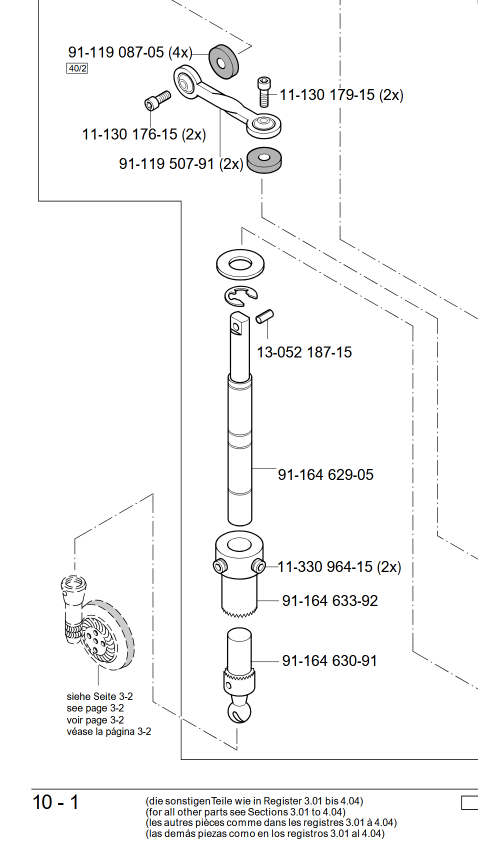All Activity
- Past hour
-
spring flowers and good food
Darren8306 replied to chuck123wapati's topic in All About Us and Off Topic
will this holster be hair-on? Be interesting to see that. -
I guess a round shape is more generic and easier to do. What do you think about overhanging shape so can sew around the outside? Wouldn't wear em to a party but for indoors or the garden.........
-

Making some new slippers (hopefully.
chuck123wapati replied to toxo's topic in Leatherwork Conversation
How come when you trace your foot, it doesn't look anything like the toe of a shoe? cool project indeed!! - Today
-

Leather Weight for Lined Holsters.
AlZilla replied to Latigo Smith's topic in Gun Holsters, Rifle Slings and Knife Sheathes
Red Nichols, as I recall, recommends horse butt strips. I've been trying to find the post over on the Smith & Wesson forum where he talked about it. I'll keep looking. -

spring flowers and good food
chuck123wapati replied to chuck123wapati's topic in All About Us and Off Topic
Success!! They aren't clothing soft, but then again, they are for a holster gun belt set I'm thinking of making for my dad's old BP pistol. They are the forelegs from a cow and a bull elk, the bull being the darker chocolate brown. -

spring flowers and good food
chuck123wapati replied to chuck123wapati's topic in All About Us and Off Topic
Those would certainly cut down on my acetone replacement, I'm gonna have to get me some. -
my two cents. The temper of a given piece of leather is affected by numerous variables, including the Type of cow, tanning processes/tannery, and where it is taken from on the hide (i.e., belly or back), and construction techniques are just a partial list of the possibilities. So to make an absolute statement on which is stiffer is silly at best. Given that you want a guaranteed optimal outcome, you will have to do some real-life testing to eliminate as many of those variables as possible. Use specific parts of the hide, specific tannery's, and be very precise with your construction, including the addition of liquors/oils during the finishing stages. Some folks use a thick outer layer with a thin liner, some use two equal-thickness pieces because they can get them from the same hide, thinking it makes construction costs less or easier in some way. Whether one method is better is again debatable and susceptible to the variables. Bianchi probably can handle the cost of more waste than you at the beginning, so they can get refined and consistent results. we, as small batch folks, need to be much more selective to compete. Contact cement can be diluted and made thinner with acetone. Bianchi probably figured out it goes farther and dries faster that way. Good luck to you. I can't wait to see your stuff.
-
I've just made an account on this website, as I'm just now getting back into leatherwork after many years of being away from it due to far too many other projects. Years ago, the holsters I made were unlined, but I plan to make my holsters lined with veg-tan going forward. Once I get back in the groove of it (as I'm a tad rusty, I'm sure), I'll also be making holsters to sell as a business venture. I have a few questions regarding the optimal weight of leather to use for such a purpose. For reference, I'll be making holsters primarily for full size handguns such as the Colt Gov't .45 and Super .38, Browning Hi-Power, Browning Sig BDA .45, Smith 59, Smith N-Frames, Colt Python and also some medium frame revolvers such as Ruger Security, Service and Speed Six's, Smith K-Frames as well as Colt Mk. III's and Official Police. As such, I'm looking for a leather weight that will provide good stiffness to firmly support the handgun and that will not allow the gun to flex the holster with use, yet while still being able to, with some effort, achieve good detail molding to relieve pressure off the high edges of the gun for the purpose of helping to preserve bluing. I've read from many members on this site that a lined holster consisting of 2 layers of equal weight veg-tan laminated with a good contact cement such as Weldwood will be stiffer and more rigid than an unlined holster of similar thickness. As such I was planning on using two layers of 4/5oz for this purpose, as I tend to like 8/9oz or 9/10oz for an unlined holster, depending on the size and weight of the gun. However, I read something from a man whose expertise I trust which stated that the opposite is the case, meaning that a lined holster will be softer and less rigid than an unlined holster of similar thickness due to the leather's temper. It's from a 1981 article titled "Holster Linings: Hidden Protection", written by Richard D.E. Nichols, the former head of R&D at Bianchi International. Here's the quote; "The cowhide lined holster has more body, stiffness and rigidity than the suede lined or unlined holster. It also tends to be the bulkiest of the three. Because of a leather property called temper, a lined holster is not merely two thin layers that equal an unlined holster's thickness. A heavy duty unlined holster might be made of 10 ounce leather, which is around 3/16" thick. However, comparable cowhide lined holsters would be two layers of 7 ounce, which is a bit less than 1/4" thick. The difference is caused by leather's tendency to become stiffer as it's made thicker. This stiffness or temper equates to body for the holster. Using the above example again, two layers of 5 ounce might be the same thickness as the single piece of 10 ounce, but would be much softer and less durable." I have a tendency to trust Mr. Nichols' advice, given that he has likely created more successful holsters designs than any other one person, between his 17 years at Bianchi during the companies' peak and his design work for many other gunleather companies in the 38 years since Bianchi was sold. Yet, I also trust the advice of many of the members on this website. I've considered the possibility that the cause for this difference of experiences with lined holsters could be the adhesive used to laminate the two layers of leather together. In the article mentioned above, there's a photograph of a lined holster having glue applied to it's layers at the Bianchi factory, and while it's difficult to accurately identify the type of glue being used, it appears to be of a thinner and smoother consistency than contact cement, and as such I'm wondering if they used a glue that's less stiff and rigid than contact cement once cured. I'll be attempting to contact Mr. Nichols shortly for the purpose of asking him what glue they used at Bianchi, but until then it's just a guess. I'd be appreciative for the opinions on this matter from the kind people of this forum. In particular, I'd be very interested to hear the opinion of Mr. Dwight, whom I know for a fact makes quite a number of lined holsters. I know the smartest option is to experiment with making lined holsters using different weight leathers to determine which will work best. But, I'd still like to have a general idea of what weight I should be using beforehand just to get me in the ballpark. Thank you.
-
maybe this https://www.ebay.de/itm/385670072955
-
no facetime but I may be able to hep when you explain the problem and post some pictures. What model do you have?
-
Yes i pretty sure there is binders for the class 26. Let me look 2mrow, but I am pretty sure i bought a set.
-
landis 5 in 1 Landis 25 - Landis 5 in 1
GraceAVD replied to GraceAVD's topic in New and Refurbished to Like New
Aww, thank you! And yes, sanding and painting is was two whole weeks of full time attendance. You kinda have to wait before you turn the pieces to coat every crevice and corner, and then you have to wait like a day or two to let every layer dry hahaha. Also I was surprised to see that the Montana Gold Metal primer was a darker red colour. Didn't expect that, thought it would be white-ish. Thanks again for the appreciation 😄 Grace- 2 replies
-
- landis
- landis model 25
-
(and 2 more)
Tagged with:
-
Hi Shoepatcher
I have been chatting with Constabulary and he recommended getting in touch with you.
I have a Patent Elastic boot patcher that is missing the shuttle. The rest of the machine is in good order as far as I can tell and I am keen to get it going. Would you possibly have or know of where I can purchase a small shuttle for this machine?
Any help would be much appreciated.
Regards
Smileyfaces
-
I moved your post to leather sewing machines, You are much more likely to get some answers here.
-
I moved your post to leather sewing machines. You are much more likely to get answers here.
-
@BaroqueLeatherGal, you could tag @terrymac to get their attention.
- Yesterday
-
Chui2022 joined the community
-
Hello, I am looking to make duffle bags using a cobra class 26 and finish my inside edges with binding. Is there an attachment that works well with the cobra class 26?
-

Help Wanted: Leather Tooling Artist
BaroqueLeatherGal replied to BaroqueLeatherGal's topic in Help Wanted
sure whats your email? -
Hello, I am looking for an industrial sewing machine Mechanic, who is experienced with fixing Claes Patchers, it has to be through Face Time. I contacted Landis International they could not help me with the issues, I was surprised. Willing to pay. I’m in desperate need of having two Claes Patchers fixed. 603 952 4818. Northeast time zone.Thank you.
-
-

Will this work for a singer 111w154 ?
AlZilla replied to outaluck's topic in Leather Sewing Machines
It takes some research but you can find cheap servos with a start speed of 100 rpms. In my case, with the small pulley and a speed reducer, I can get down to 11 stitches/minute. There's a whole rabbit trail of slow speed versus cooling. But I think at the hobby level we're not running these things for prolonged periods of time, so it's probably not a giant issue. 11 spm is ridiculously slow.




.thumb.jpg.6e903dd66163ad5672f00f144058c571.jpg)
